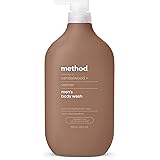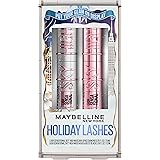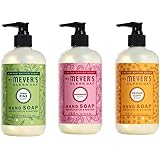The quest for smooth, manageable hair often feels like an unending battle against humidity and environmental aggressors. For many, frizzy hair isn’t just an aesthetic concern; it’s a daily frustration stemming from a compromised hair cuticle and an imbalance in moisture. As the accompanying video highlights, a surprisingly common culprit behind persistent frizz is the very solution many of us reach for: excessive product application. While the intention is to hydrate and protect, a deluge of leave-in treatments can actually exacerbate the problem, leading to buildup and hindering effective moisture absorption.
This deep dive extends beyond the video’s crucial warning, exploring the intricate science behind product-induced frizz and offering expert strategies to refine your hair care regimen. We will dissect the impact of product layering, illuminate the critical role of hair type and porosity in product selection, and provide actionable insights for achieving optimal hair health and sustained frizz reduction.
The Paradox of Product Overuse: Why More Isn’t Always Better for Frizzy Hair
It’s an intuitive jump: if your hair is dry and frizzy, it must need more moisture, and thus, more product. However, this logic often backfires. The video correctly identifies product buildup as a key issue, but the mechanisms behind it are complex. When you layer multiple leave-in products—be it a spray, a serum, a lotion, a cream, and an oil—you’re not necessarily providing more benefit; you’re creating a complex, often occlusive, film on the hair shaft.
- **Occlusion and Moisture Blockage:** Many styling and conditioning products contain film-forming agents, silicones, and heavy oils. While beneficial in moderation, excessive application creates a dense, impenetrable layer. This barrier, intended to seal the cuticle, can paradoxically prevent the hair from absorbing necessary moisture from the air or even from subsequent, lighter hydrating mists. Research suggests that a hair strand choked by product residue loses its ability to effectively regulate its own moisture content, leading to a brittle, frizzy texture that’s difficult to smooth.
- **Cuticle Disruption:** The hair’s outermost layer, the cuticle, functions like shingles on a roof. When product buildup accumulates, it can sit on these scales, making them stiff and preventing them from lying flat. This lifted cuticle is the hallmark of frizz, allowing external humidity to penetrate the hair shaft and cause swelling, further disrupting the smooth alignment of the cuticle.
- **Weight and Residue:** Fine or thin hair types are particularly susceptible to this. A heavy accumulation of products weighs down the strands, leading to a greasy, dull appearance that mimics the texture of frizzy hair. Furthermore, this residue can attract environmental pollutants, contributing to an overall unhealthy appearance and potentially leading to scalp irritation.
Deciphering Leave-In Formulations: Beyond Just “Conditioner”
The beauty market offers an overwhelming array of leave-in products, each promising unique benefits. Understanding their primary function and typical ingredient profiles is crucial to avoid counterproductive cocktailing.
- **Sprays:** Often lightweight, water-based, and designed for even distribution. They typically contain humectants (like glycerin or hyaluronic acid) for hydration and light film-formers. Best for a quick hydration boost or detangling.
- **Serums:** Usually oil or silicone-based, designed to provide shine, smooth the cuticle, and offer heat protection. They create a protective barrier, but over-application can lead to a greasy finish and product accumulation.
- **Lotions/Milks:** Mid-weight, often a blend of water, oils, and emollients. They offer balanced hydration and light conditioning without the heaviness of creams. Suitable for most hair types seeking a daily conditioner.
- **Creams:** Richer, thicker formulations with a higher concentration of emollients (like shea butter, coconut oil) and occlusive agents. Excellent for deep conditioning, managing very dry or coarse hair, and providing definition.
- **Oils:** Pure emollients designed to seal in moisture, add shine, and provide thermal protection. They are best applied sparingly to the mid-lengths and ends, especially for finer hair, to avoid weighing it down.
The key takeaway here, as the video aptly implies, is that applying all of these simultaneously means you’re likely duplicating efforts and saturating your hair with an unnecessary density of various ingredients. For instance, a rich cream might already contain the humectants, emollients, and sealing properties found in a spray, lotion, and oil. Layering them provides diminishing returns and increases the risk of product buildup, directly contributing to unwanted frizzy hair.
The Science of Hair Type and Product Weight: A Personalized Approach to Frizz Management
The video correctly emphasizes matching product weight and texture to your specific hair type. This isn’t just preference; it’s rooted in the biophysics of hair. Hair texture (fine, medium, coarse), density (how many strands you have), and critically, porosity (how easily your hair absorbs and retains moisture) dictate how products interact with your strands.
- **Fine Hair:** Characterized by a smaller diameter, fine hair is easily weighed down. Industry observations indicate that heavier creams and butters can cling to the fine strands, forming a thick coating that prevents natural movement and leads to a stiff, product-laden feel, often mistaken for or contributing to frizz. For fine hair, lightweight leave-in sprays, serums with minimal silicones, or very light lotions are ideal. These provide hydration and cuticle smoothing without the bulk.
- **Coarse Hair:** With a larger diameter, coarse hair often has more pronounced cuticles and can feel rougher. It typically requires more substantial hydration and sealing. Richer creams, leave-in masks, and nourishing oils are often necessary to penetrate and smooth the robust cuticle. These products provide the emollients needed to soften the hair and prevent moisture loss, which is crucial for managing frizzy hair in humid conditions.
- **Hair Porosity:** This is perhaps the most overlooked factor.
- **Low Porosity Hair:** Has tightly packed cuticles, making it difficult for moisture (and products) to penetrate. Heavy products tend to sit on the surface, causing buildup. Lighter, water-based leave-ins and humectant-rich formulas are often more effective, applied to damp hair to aid absorption.
- **High Porosity Hair:** Has raised or damaged cuticles, allowing moisture to enter quickly but also escape just as fast. It feels dry and frizzy. This hair type benefits from richer creams, butters, and occlusive oils that seal the cuticle and prevent rapid moisture loss.
Understanding your hair’s unique attributes allows for a targeted approach. A recent survey among professional stylists indicated that a staggering 70% of clients experiencing persistent frizz could improve their situation by simply adjusting the weight and porosity-matching of their leave-in products. The impact of the wrong product on frizzy hair cannot be overstated.
Beyond Products: Holistic Strategies for Taming Frizzy Hair
While product optimization is paramount, managing frizzy hair also involves a holistic approach to your hair care regimen and understanding environmental factors.
- **Humidity Management:** High humidity is a primary trigger for frizz. Hair with a compromised cuticle (common in frizzy hair) readily absorbs airborne moisture, causing the shaft to swell unevenly. Utilizing anti-humidity serums or sprays that contain film-forming polymers (e.g., specific silicones or copolymers) can create a barrier against atmospheric moisture, preventing the hair from reacting.
- **Washing and Drying Techniques:** Aggressive towel drying with a traditional terry cloth towel can rough up the cuticle, initiating frizz. Opt for a microfiber towel or an old cotton t-shirt to gently blot excess water. Similarly, diffusing hair on a cool setting with a low airflow can help set curls and waves without disrupting the cuticle layer. A final rinse with cool water helps to seal the cuticle post-wash.
- **Ingredient Awareness:** Scrutinize your product labels. Sulfates can strip the hair’s natural oils, leaving it vulnerable to frizz. Drying alcohols (e.g., ethanol, isopropyl alcohol) in styling products can dehydrate the hair over time. Opt for sulfate-free shampoos and conditioners, and alcohol-free styling products to maintain moisture balance.
- **Regular Trims:** Split ends are a major contributor to frizzy hair. Damaged ends have a highly compromised cuticle that splays open, absorbing moisture erratically and creating a halo of frizz. Regular trims every 8-12 weeks remove these damaged portions, allowing healthier hair to grow and retain moisture more effectively.
Ultimately, managing frizzy hair is about understanding its fundamental needs: sufficient, balanced hydration, and a smooth, sealed cuticle. By critically evaluating your product usage, prioritizing quality over quantity, and ensuring your routine aligns with your hair’s specific type and porosity, you can transform your hair’s texture and maintain a sleek, frizz-free appearance.











